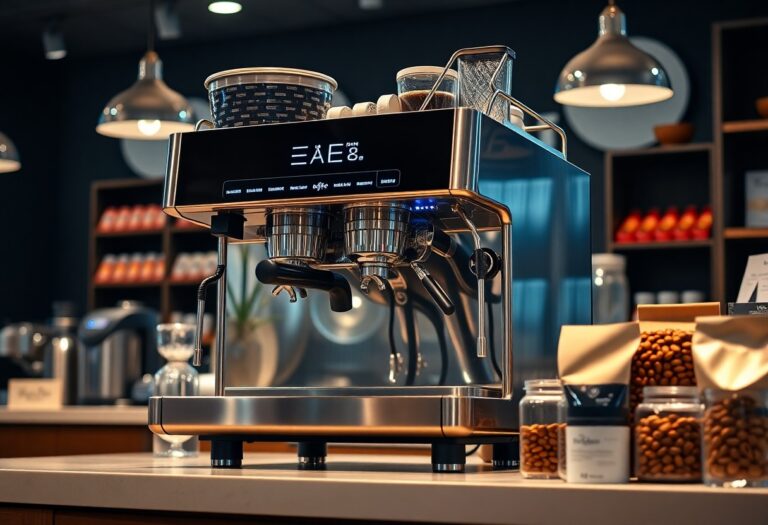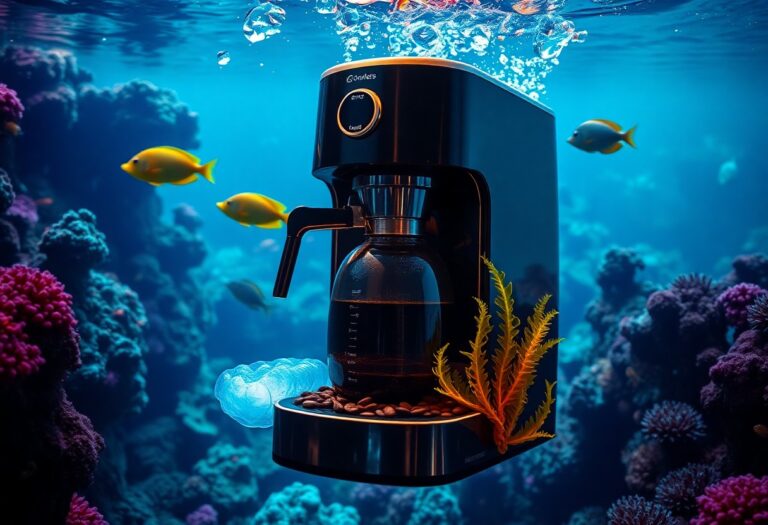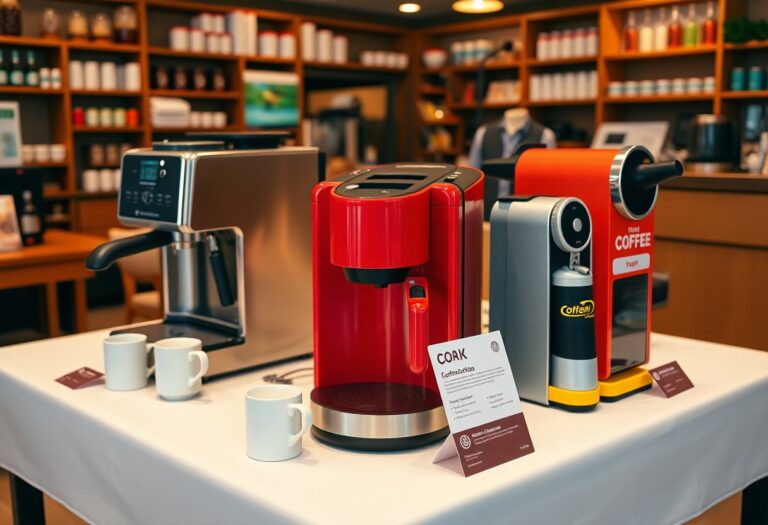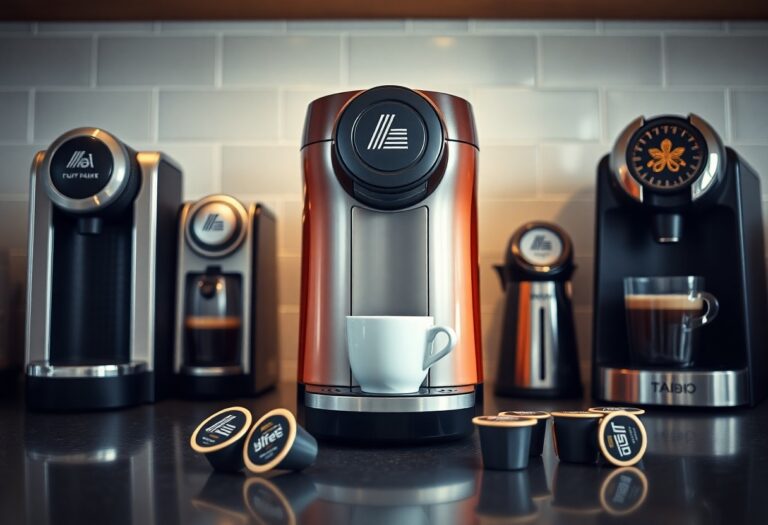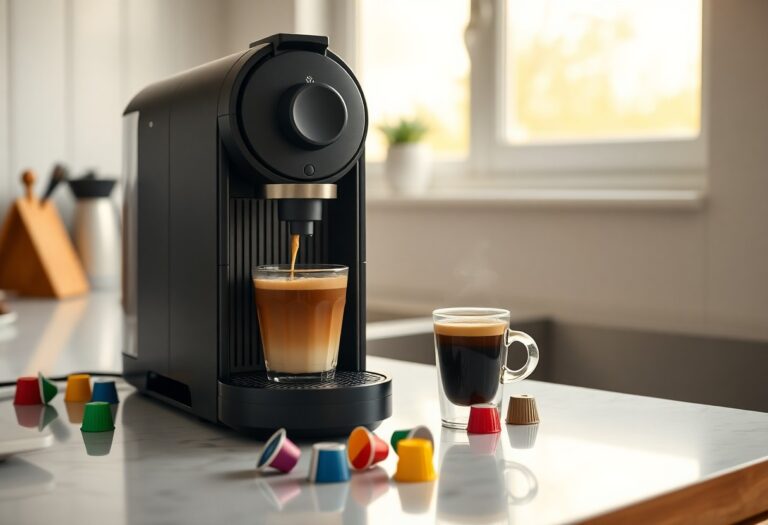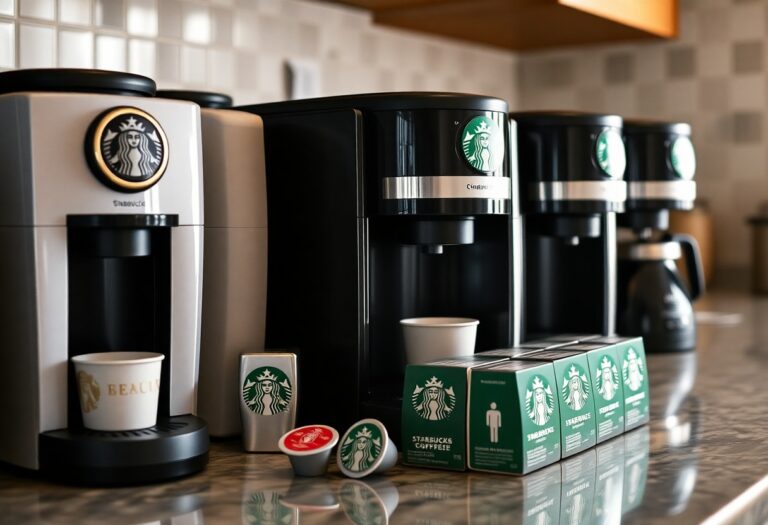What Type of Coffee Goes in an Espresso Machine – Espresso Specific
There’s a vast world of coffee, but when it comes to the specific needs of your espresso machine, selecting the right type of coffee is crucial. You should opt for finely ground coffee beans, ideally labeled as espresso roast, which enhance your brew’s flavor and provide that rich, authentic espresso experience. Pay attention to freshness; utilizing freshly roasted and ground beans will significantly improve the taste. By understanding these key factors, you can ensure that every shot of espresso you make is delicious and satisfying in your cup.
Key Takeaways:
- Espresso coffee is typically made from finely ground beans, allowing for optimal extraction under pressure in an espresso machine.
- Use high-quality, fresh coffee beans, preferably a medium to dark roast, to enhance the rich flavors and crema during brewing.
- Beans should be ground just before brewing to preserve freshness and aroma, achieving a grind size similar to table salt.
- Opt for blends specifically labeled for espresso, as they are crafted to balance sweetness and acidity for a well-rounded flavor profile.
- Storing beans properly in an airtight container in a cool, dark place will maintain their quality and flavor over time.

The Essential Coffee Characteristics for Espresso
Understanding the crucial characteristics of coffee used in espresso helps you achieve a fuller flavor and richer experience. Quality espresso beans should boast a balanced acidity, sweetness, and body, contributing to a harmonious cup. Additionally, the coffee’s grind size and extraction time play significant roles, as they influence the concentration of flavors and aroma, resulting in the perfect shot.
Understanding Bean Origins and Varietals
Bean origins and varietals greatly impact the flavor profile of your espresso. For instance, Arabica beans typically offer a smoother, sweeter taste, while Robusta presents a bolder, earthy flavor. Geographical factors, including altitude and climate, enhance the bean’s unique characteristics; Ethiopian coffees are known for their fruity and floral notes, whereas Brazilian beans often exhibit nutty undertones.
The Role of Roast Levels in Flavor Profiles
Roast levels play a vital role in defining the flavors you experience in your espresso. Light roasts retain more original bean characteristics, offering delicate and fruity notes, while medium roasts provide a balanced profile with a mix of acidity and sweetness. Dark roasts tend to emphasize bold, chocolatey flavors, often accompanied by a lower acidity level. When choosing a roast, consider how you want your espresso to taste; for example, a medium-dark roast can yield a well-rounded flavor that highlights both sweetness and intensity.
Exploring roast levels further reveals how they affect the sensory experience of espresso. A light roast, perfect for highlighting acidic brightness, may excel in single-origin shots, while a dark roast can deliver the robust flavors that complement milk in a latte. The ideal espresso blend often incorporates a mix of roast levels, ensuring that the final product boasts a spectrum of flavors, from sweet and fruity to rich and chocolaty. Don’t shy away from experimenting with different roasts to discover your unique espresso preferences.

Grind Consistency: The Key to Perfect Extraction
Your espresso machine’s performance heavily relies on grind consistency. Even minor variations in grind size can lead to uneven extraction, affecting the flavor profile and overall quality of your shot. A uniform grind ensures that water flows through the coffee grounds evenly, allowing optimal flavor and aroma to be released during extraction. Strive for a consistent texture resembling fine table salt for the best results. With the right grind consistency, you’ll unlock the full potential of your espresso beans.
How Grind Size Affects Espresso Quality
The size of your coffee grounds directly impacts extraction time and flavor intensity. A finer grind increases surface area, enhancing extraction and leading to a stronger, more robust espresso. Conversely, a coarser grind often results in under-extraction, yielding a weak and sour flavor. Aim for grind sizes that match your espresso machine’s specifications for the best results.
Essential Equipment for Achieving the Right Grind
Investing in the right equipment is vital for achieving the perfect grind for your espresso. A high-quality burr grinder is imperative, as it provides uniform grinding, unlike blade grinders that can create inconsistent sizes. Optical or electronic scales can help you measure your coffee dose accurately, while grind timers ensure you have consistent extraction times. These tools collectively create a well-rounded espresso experience.
A burr grinder, specifically, is designed to crush your coffee beans between two revolving abrasive surfaces, providing a uniform grind size imperative for espresso. Unlike blade grinders, burr grinders allow for precise adjustments, ensuring you can cater to both beans and brewing preferences. High-quality grinders come equipped with different settings, enabling you to experiment with finer or coarser grinds until you find the ideal texture for your espresso. Additionally, investing in a digital scale helps you measure the right amount of coffee for your shots, playing an integral role in achieving perfection in your espresso endeavors.
Blends vs. Single Origins: Decoding Your Espresso Options
Exploring the world of espresso means navigating the choices between blends and single-origin coffees. Blends are crafted for harmony and consistency, often balancing various flavor notes to create a reliable cup. In contrast, single-origin beans give you the chance to experience the distinct flavors that reflect their specific geographical origins. For insights into what coffee types to use, you can refer to this useful resource: What Type of Coffee Is Used In a Coffee-Maker?
The Benefits of Espresso Blends for Flavor Complexity
Espresso blends are designed meticulously to achieve optimal flavor complexity. By combining beans from different regions, roasters create a layered profile, balancing acidity, sweetness, and body. This results in a smooth, well-rounded espresso that brings out individual notes in each cup, catering to a wider range of tastes.
When to Choose Single-Origin Beans for Unique Tastes
Choose single-origin beans when you’re ready to explore and taste the intricacies of regional coffee profiles. Each bean tells a story, reflecting its birthplace through unique flavors and aromas. Whether you’re drawn to the fruity notes of Ethiopian beans or the chocolate undertones from Colombian varieties, single-origin espressos can elevate your coffee experience.
Single-origin beans provide a distinct sense of place that can amplify your coffee journey. The opportunity to taste the characteristics inherent to a specific region makes each cup unique. You might enjoy the bright acidity of a Kenyan coffee one day, only to find the syrupy sweetness of Brazilian beans captivating the next. This variability allows you to refine your palate and discover what you truly love in your espresso.
The Importance of Freshness: Why Time Matters in Coffee Selection
Freshness significantly influences espresso quality, as the vibrant flavors and aromas of coffee beans diminish rapidly after roasting. Ideally, espresso is made from beans that have been roasted within the last few weeks; purchasing beans from a local roaster can help ensure you receive the freshest product. Look for roasting dates on bags and aim to consume the coffee within a few weeks of opening to enjoy its full potential. Investing in fresh beans enhances the overall espresso experience and allows you to appreciate the complex flavor profiles that each origin has to offer.
How Staleness Affects Espresso Flavor
Stale coffee beans undergo a process called oxidation, leading to a dull and flat flavor profile that lacks the bright notes and richness you crave in your espresso. This lack of freshness can result in bitter or sour flavors, stripping away the nuanced characteristics of the beans. Fresh espresso should awaken your palate, while staleness can obscure the intricate balance between acidity and sweetness that defines quality coffee. Each withdrawal from a stale bag makes it harder to achieve that desired creamy mouthfeel and layered taste.
Best Practices for Sourcing and Storing Coffee
To enjoy the best flavors in your espresso, focus on sourcing high-quality, freshly roasted beans from reputable roasters. Select beans that have been roasted less than two weeks prior, and consider opting for small batches to prevent prolonged exposure to air. Store your coffee in an airtight container, away from light, moisture, and heat, which can expedite staleness. A cool, dark pantry often serves as an ideal environment for maintaining freshness. Finally, if possible, use a grinder just before brewing; freshly ground coffee retains flavors far better than pre-ground options.
Invest in quality storage containers that minimize exposure to air, moisture, heat, and light. Vacuum-sealed bags or ceramic jars with silicone seals work exceptionally well. Opt for whole beans rather than pre-ground coffee to retain flavor integrity. Consider purchasing your coffee weekly or bi-weekly to ensure you always have fresh beans on hand. Establish a relationship with local roasters or specialty coffee shops where you can learn about their roasting dates and ensure you’re getting the freshest product possible. By prioritizing freshness, you’ll elevate your espresso experience and savor every cup to the fullest.
Brewing Parameters: The Perfect Marriage of Coffee and Machine
A successful espresso shot hinges on specific brewing parameters that harmonize your coffee choice with your espresso machine’s capabilities. Achieving a balance between grind size, dosage, and extraction time can elevate your espresso experience. Attention to these details transforms your coffee into a rich, flavorful beverage, making your morning routine more satisfying. Precision and consistency are not just performance metrics; they are crucial for unlocking the distinct characteristics of your chosen beans.
Ideal Dosage and Yield for Optimal Espresso Shots
For a standard espresso shot, aiming for a dosage between 18-20 grams of coffee is typically recommended. This amount yields approximately 36-40 grams of liquid espresso, achieving a brew ratio of around 1:2. Adjusting these figures slightly based on your taste preferences and the specific characteristics of your beans can help you discover the perfect extraction for your palate. Consistency with dosage is key to ensuring that each shot you pull retains its desired flavor profile.
Water Temperature and Pressure Considerations
Water temperature significantly impacts the extraction process, and for espresso, the ideal range is between 90-96°C (194-205°F). Too hot or too cold water can lead to over-extraction or under-extraction. Pressure is another crucial factor; maintaining a pressure of 9 bars during extraction is critical to achieving that classic espresso crema and rich flavor. These parameters create the optimal conditions for extracting the oils and compounds that give espresso its distinctive character.
| Temperature Range | 90-96°C (194-205°F) |
| Pressure Level | 9 bars |
Understanding the interaction between water temperature and pressure ensures that your coffee’s flavors are fully expressed. Hotter water extracts flavors more quickly, yet if it exceeds the 96°C threshold, you’re at risk of bitterness. Conversely, using cooler water stifles extraction, leaving you with a sour or weak shot. The 9-bar pressure standard overcomes the resistance of the coffee grounds, allowing for proper extraction of oils and solids, which contributes to the espresso’s creamy mouthfeel.
| Above 96°C | Risk of bitterness and over-extraction |
| Below 90°C | Weak or sour shots due to under-extraction |
Summing up
So, when selecting coffee for your espresso machine, focus on using beans specifically roasted for espresso, typically with a dark or medium roast profile. You should opt for finely ground coffee to ensure optimal extraction during the brewing process. This will allow you to experience the rich flavors and intense aromas that espresso is renowned for. For a deeper explore the types of ground coffee suitable for your espresso setup, check out this guide on What Type of Ground Coffee for Espresso Machine.
FAQ
Q: What type of coffee beans are best for espresso machines?
A: The ideal coffee beans for espresso are typically Arabica or a blend that includes Robusta. Arabica beans offer a finer flavor profile with notes of sweetness and acidity, while Robusta beans provide a higher caffeine content and a crema-enhancing quality. A blend that balances both can yield a richer taste experience in your espresso.
Q: Should I use whole beans or pre-ground coffee for my espresso machine?
A: For the freshest and most flavorful espresso, it is recommended to use whole beans and grind them just before brewing. This method helps to retain the oils and aromatics that can be lost in pre-ground coffee. The grind size should be fine for espresso, resembling table salt, to ensure optimal extraction.
Q: Is coffee roast type important for espresso?
A: Yes, the roast type significantly influences the taste of your espresso. Medium to dark roasts are commonly favored for espresso because they produce a richer and bolder flavor. These roasts tend to bring out chocolatey and nutty notes, which complement the concentrated brew of espresso. However, lighter roasts can also be used for a fruitier taste, appealing to those seeking unique flavor profiles.
Q: How can I determine the right grind size for my espresso?
A: The right grind size for espresso is typically fine, akin to granulated sugar or table salt. To test the grind, use the espresso machine to pull a shot: if it flows too quickly, the grind may be too coarse; if it takes too long and is bitter, it may be too fine. Adjusting the grind size to achieve a balanced extraction time of around 25-30 seconds is key to a great espresso shot.
Q: Can I use flavored coffee in my espresso machine?
A: While you can use flavored coffee in an espresso machine, it is important to note that the intensity of the flavor may diminish during brewing due to the high-pressure extraction process. Additionally, flavored coffees can sometimes leave residues that may affect the performance of the machine over time. If you enjoy these varieties, consider using a separate grinder and equipment for flavored blends to maintain the integrity of your regular coffee.


